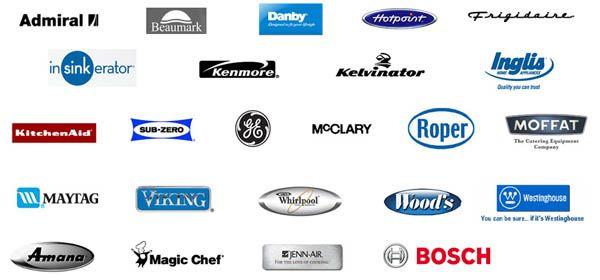How Long Does A Dishwasher Take to Run?
A dishwasher saves you the task of having to labor in the sink.
It gives you more time to handle other tasks while it runs. The use of dishwasher aid conserves water which saves money in the long run.
It takes between 1 to 4 hours for a complete cycle of the dishwasher. The time range is huge as there’s no standard time for all dishwashers. Several factors affect how long it takes to get your dishes sparkling clean.
Factors that Affect the Duration of a Dishwasher Cycle
The main components that affect the length of time a dishwasher run is;
1. The brand
Brands that manufacture dishwashers have set up their products with different designs. This in turn affects how they operate.
For example, some Bosch dishwashers take less than an hour for the express cycle. While it may take up to 2.5 hours for the eco-mode cycle.

2. Age
The newer dishwasher versions take longer when compared to the older generation washers.
This change is due to the amendments made to the federal energy and water use guidelines.
The guidelines set are there to ensure that the appliances use less water and energy. This makes them more efficient and sustainable.
Newer models run longer to improve performance with minimal water and energy use.
A new dishwasher takes longer in the first run to give the sensors adequate time for calibration.
You shouldn’t interrupt this process until the dishwasher has finished cleaning.
3. Cycle Chosen
There are about 8 dishwasher cycles programmed.
The cycles are set up for different types of dishes and the type of wash needed. It will thus affect the time it takes to complete the cleaning process.
The most common cycles include normal, delicate, eco, pre-wash, sanitize, heavy and fast.
Fast and pre-wash will take a shorter time to run compared to the other cycles.
As you set up and run the dishwasher take note of the cycle to have a rough idea of how long the process will take.
It’d be wise to have a record of the time taken for the different cycles on your machine for reference.
4. Loading
In case you didn’t know this, you should run your dishwasher on a full load only. If you’re not able to achieve a full load, running it three-quarter way is also acceptable.
If you run the machine in a half or quarter load, you’ll take less time. Yet, you’ll end up incurring more expenses as more water and energy are used up in the runs.
Moreover, ensure that you also don’t overload the dishwasher. It’ll take longer and you’ll not get a satisfactory level of cleanliness.
When loading the dishwasher, given ample space between the plates and glasses. This creates adequate room for the water to move around and clean.
Also, ensure that you place the utensils on the right rack- the top or bottom.

5. Dishwasher Settings
Aside from the dishwasher cycles, other settings affect the run time of the washer.
There are settings on the mode of drying, extra-hygiene, and settings on the stages.
When you opt to add extra steps or settings like extra drying, it’ll take longer to accomplish the set task.
Be aware of your dishwasher settings to get great performance at a reasonable run time.
6. Water Quality
The quality of water in use does affect the dishwasher run time. Limescale and hard water take a longer time to heat up for the cleaning process to begin.
The hard water interferes with the sensors which results in longer wash cycles. Also, any mineral build-up in the machine affects the quality of water increasing the run time.
It’s important to check on the quality of water you’re using.
Also, often clean the dishwasher to remove the accumulated minerals. You can reduce the mineral build-up using cleaning tablets.
7. Degree of Dish Soiling
The degree of dish soiling refers to how dirty your dishes are before putting them in the dishwasher.
If they’re very dirty, the sensors of the dishwasher will prolong the run time for adequate cleaning.
If you’re aiming at shorter cleaning times, you can opt to rinse them before loading the machine.
Take note, it’s not required to rinse, this is a preference.

How do I know if my Dishwasher Cycle Times are too Long?
Your dishwasher cycle is too long if it takes more than 4 hours to run.
With frequent use of your dishwasher machine, you’re able to determine the average time it takes. This is irrespective of the cycle and other settings in place.
When it takes longer than you’re used to, you should be concerned and identify the issue.
For new machines, record the run times for future comparisons. This is after sensor calibration in the first run.
Another option is to make use of the user guide that comes with the product.
You’ll learn how to use the machine. It also gives estimates of dishwasher run times for the different cycles.
Troubleshooting for Shorter Dishwasher Runs
If your dishwasher is taking longer than usual to clean, a few options to look into include;
1. Check your Water Temperature and Pressure
Ensure that the water entering the dishwasher is not cold. The water should be hot with a temperature of between 120 to 150 degrees Fahrenheit.
With cold water, the heating element takes longer to heat the water. The water needs to be hot before cleaning can begin. This, in turn, prolongs the dishwasher run time.
Apart from the temperature, also check the pressure. If the water pressure is low, it means that not enough water is entering the machine as needed.
The pressure of water should be between 4 to 140 PSI.
2. Adjust your Dishwasher Settings
Remove extra settings that prolong your wash such as extra drying.
Also, use a specific cleaning cycle depending on the condition of your dishes.

3. Inspect the Machine Insulation System
When the insulation system does not work, the heat generated is lost to the surrounding. This adds to the time the washer runs as the heating element needs to keep reheating.
To fix this, check the padded tub insulation that borders the dishwasher frame.
Ensure that it is intact. If it’s damaged, remove it and get a replacement.
4. Confirm the Heating Element is working
The heating element starts the process of cleaning in a dishwasher.
It’s responsible for heating the water that is then circulated to the top and lower racks.
If the heating element does not work properly, the operation of the machine is affected.
To check on the condition of this heating element, use a multimeter to check the ohms.
5. Check for Mineral and Material Build-up
Any build-up in the dishwasher affects how the sensors work. They default to the longer dishwashing cycles affecting running time.
There are several ways to clean the dishwasher depending on the amount and type of buildup.
There’s an option to scrub, use vinegar, or run the dishwasher empty with detergent. Read this article to find out How Much Dishwasher Detergent You Should Use in A Dishwasher



